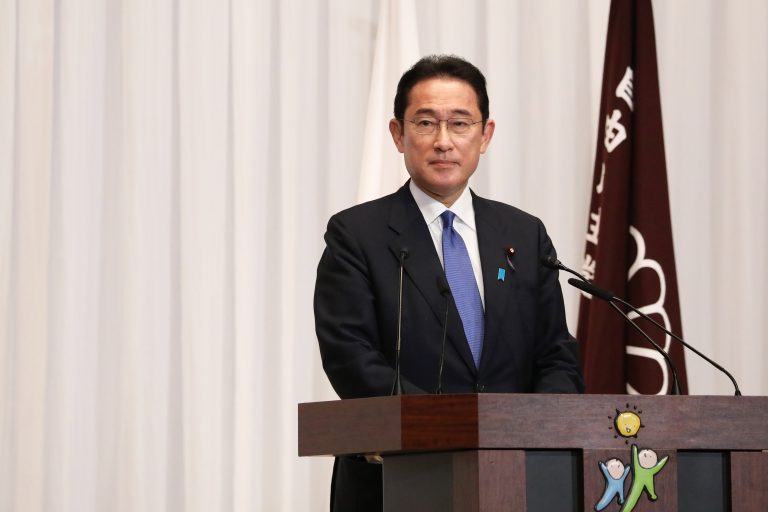Fumio Kishida, a former foreign minister for Japan, is set to become the country’s 100th Prime Minister after winning the ruling Liberal Democratic Party’s (LDP) leadership election on Sep. 29. Kishida is expected to assume power on Oct. 4 when the parliament holds an extraordinary session.
The election was contested by four candidates, with the remaining three being vaccine minister Taro Kono, internal affairs minister Sanae Takaichi, and House of Representatives member Seiko Noda.
In the initial round of voting, Mr. Kishida was neck-and-neck with the popular vaccine minister Kono, narrowly beating his rival by one vote (256-255). Meanwhile, the two female candidates, Takaichi and Noda were eliminated. In the second round, Mr. Kishida was able to secure a landslide victory, defeating Kono by 87 votes (257-170).
The victory will see Mr. Kishida becoming the leader of the world’s third-largest economy. He will succeed outgoing party leader and Prime Minister Yoshihide Suga who decided to step down after serving a single year in office. “My skill is to really listen to people… I’m determined to make efforts with everyone for an open LDP and a bright future for Japan,” Kishida said after his win.
Who is Fumio Kishida?
64-year-old Kishida comes from a family of politicians. His grandfather and father were members of the Diet (Japan’s parliament). During his childhood, Kishida spent three years in the U.S. when his father was representing Japan as a senior trade ministry official.
Success
You are now signed up for our newsletter
Success
Check your email to complete sign up
Upon returning to Japan, Kishida pursued his studies and graduated from the prestigious Waseda University in Tokyo. After a short stint in banking, Kishida eventually entered politics and became a member of the House of Representatives in 1993. In 2012, he was appointed as a foreign minister by the then Prime Minister Shinzo Abe, a post he held until 2017.
During his tenure as the foreign minister, Kishida helped finalize a deal with South Korea in 2015 concerning compensation for “comfort women,” who were exploited by the Japanese during WWII. “Comfort women” is a term used for females who were forced to provide sexual services to Japanese soldiers. Though the deal fell through after a power change in South Korea, it helped strengthen Abe’s trust in Kishida.
In 2016, he arranged for Obama’s visit to Hiroshima’s Peace Memorial Park. Kishida went on to become the defense minister for a short time and served the role of policy chief for the LDP.
The Challenges Ahead
Kishida’s first job will be to establish a new cabinet and reshuffle the LDP executive. He then has to face the general elections in November and ensure that his party retains a majority in the Parliament’s lower house. Polls have shown strong support for the LDP.
The new cabinet will be entrusted with working out how to tackle its strained relations with Japan’s biggest trading partner, China, while ensuring that it maintains firm ties with the United States, its sole military ally. North Korea’s illicit weapons programs and Beijing’s ever-expanding military strength are some of the regional security challenges that Mr. Kishida will have to address while working together with Washington.
Kishida will also have to deal with the COVID-19 pandemic and ensure a speedy economic recovery. Kishida is in favor of “new capitalism” that seeks to narrow the wealth gap between the rich and the poor, something that has worsened during the pandemic. He has also proposed a generous spending package of 30 trillion yen ($268.36 billion) to stimulate the economy.

















